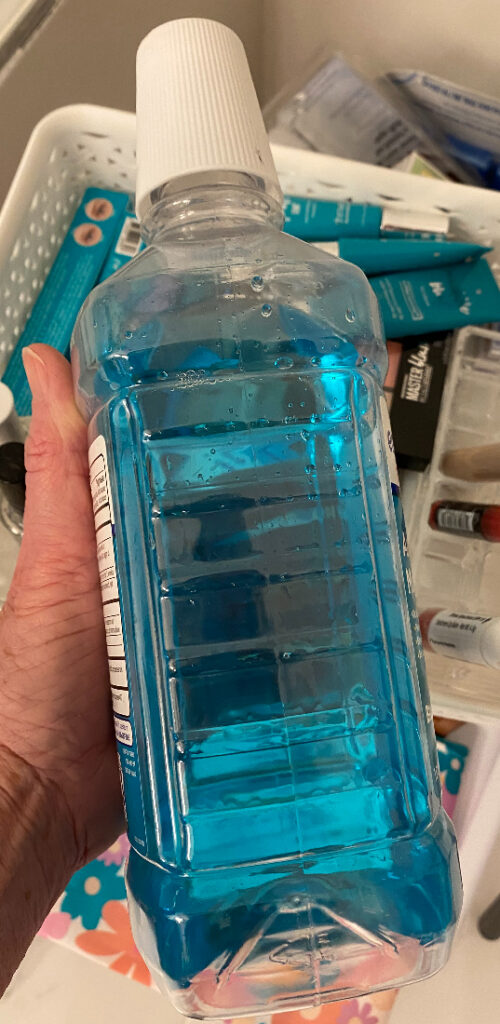Sometimes the inspiration and application of an idea can come from a familiar message that’s been put into new words.
That old idea will grab us in a new way, when it’s presented from a different angle.
I’ve written about taking small steps for years, both here and in my books. But this book about Kaizen I referred to last week, has been just what I needed.
And look – even its size reflects its message!
As I stood in the chaos of moving boxes, not sure of which way to go because some of the options required other efforts to complete, I put Kaizen to work.
Clearly, the whole project, or even part of the project, was not going to be finished that day. What was one tiny thing within my reach that I could put away? One thing.
Easy enough. Done.
Next?
By the end of the morning, I had finished moving my things into the bathroom: Shelving assembled under the sink, objects sorted, discarded, and put away.
This job had been put off for several weeks. I had enough personal hair, make up, and tooth brushing supplies – it was not an urgent task, but to complete moving in, required me to get these things out of the ugly box in my new bedroom.
You can imagine the sense of accomplishment – albeit small – that propelled me to tackle one more object in another box. Ultimately, four or five boxes were processed that day. Wow!
Reading Maurer’s book opened my eyes to another reason why small is good.
Approaching any topic from the point of view of making the smallest changes is simply more user friendly, because we are comfortable with small steps.
When faced with change involving big ideas and big leaps, our fight-or-flight response is triggered. Our body prepares for physical action (fight or flight) and the circuits for less critical operations are shut down.
In a fight-or-flight response, we do not need to digest lunch, or think about our relations with Aunt Sarah. We need to stand and fight, or get out of Dodge as fast as possible.
The problem we face in everyday situations that bring on this response is that it also brings on some degree of fear. We fear departing from anything that takes us away from the norm – and we often end up like deer in the headlights. Stuck. Frozen.
Looking at major projects can leave us wringing our hands and walking in circles.
But, learning to take the smallest step possible keeps that fight-or-flight response asleep. We can tiptoe right around it.
I’m not opening and putting away fifty boxes today. I’m going to find a home for this bottle of Listerine.
Twice weekly, extreme gym workouts aren’t happening; but I did 5 minutes of arm exercises with 3 pound weights during the commercials last night – several times. Whenever I relocate my 5 pound weights, I’ll use them to ramp up the experience.
Little things.
How can you dissolve the potential fear of facing a large or difficult project by finding the smallest possible step to take?
What’s one thing you can do for your health today?
How can you incorporate one more glass of water into your day?
Are you looking at a mess? What is one small object you can put away?
Thank you for reading foodtalk4you. If you haven’t subscribed yet, just scroll down your screen or look to the upper left along this article to subscribe today. We won’t bug you, promise. Just one email a week to alert you to the new post.
Quietly stepping around that fight-or-flight tiger.
In health –
Deidre










Love this one, Deidre!
Carole
Thanks, Carole! You know about this scene of giant projects! So glad my word resonated with you! This is us, tippy-toeing through the big stuff!
Christmas stuff is finally put away. It overwhelmed me with so much other stuff going on. I focused on one thing and then the rest went too. It was much easier than I had built up in my mind. I am going to try to work this into every day.
Congratulations, Karen! It’s been over 12 months of feeling overwhelmed, but small – even tiny – steps have transformed how I relate to tasks and goals. This little book just rewrote my own message and helped quite a bit. Learning that the big steps often trigger the fight-or-flight response and that we can keep that at bay/asleep by proceeding with small steps was revolutionary for me. Thanks for sharing!